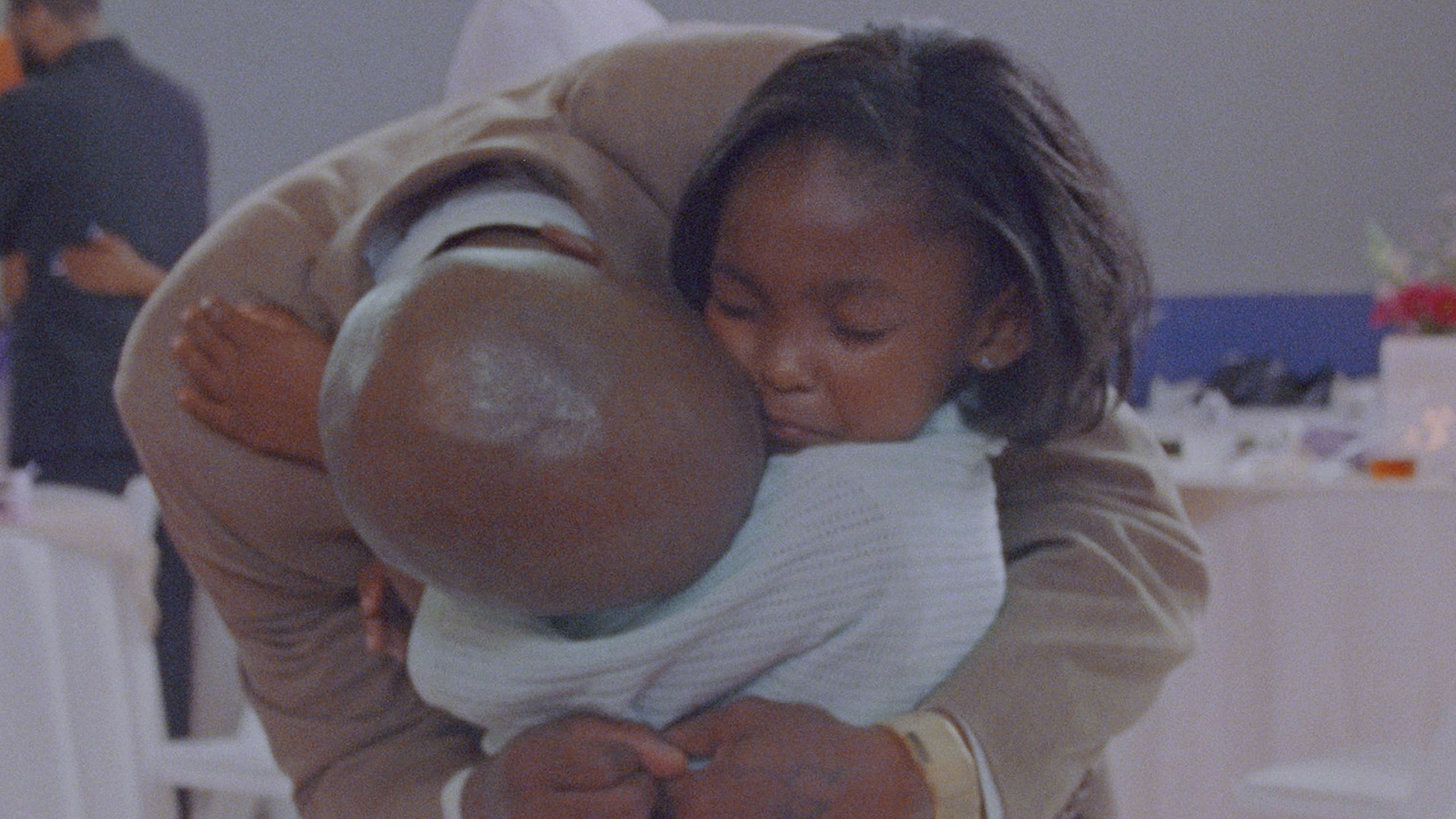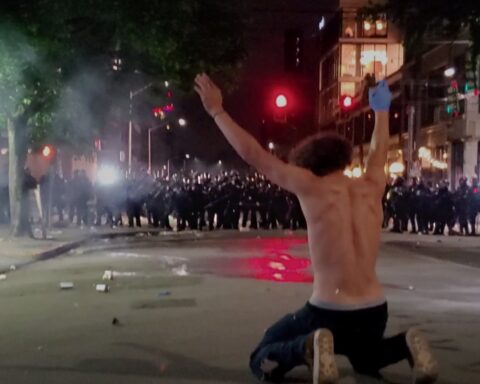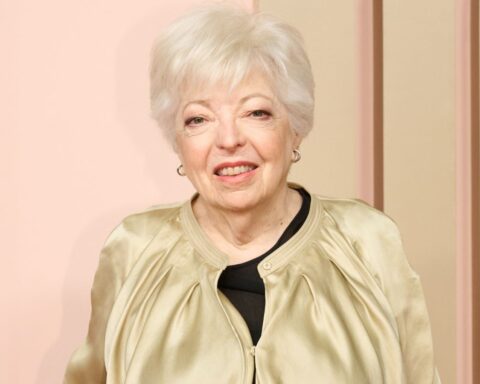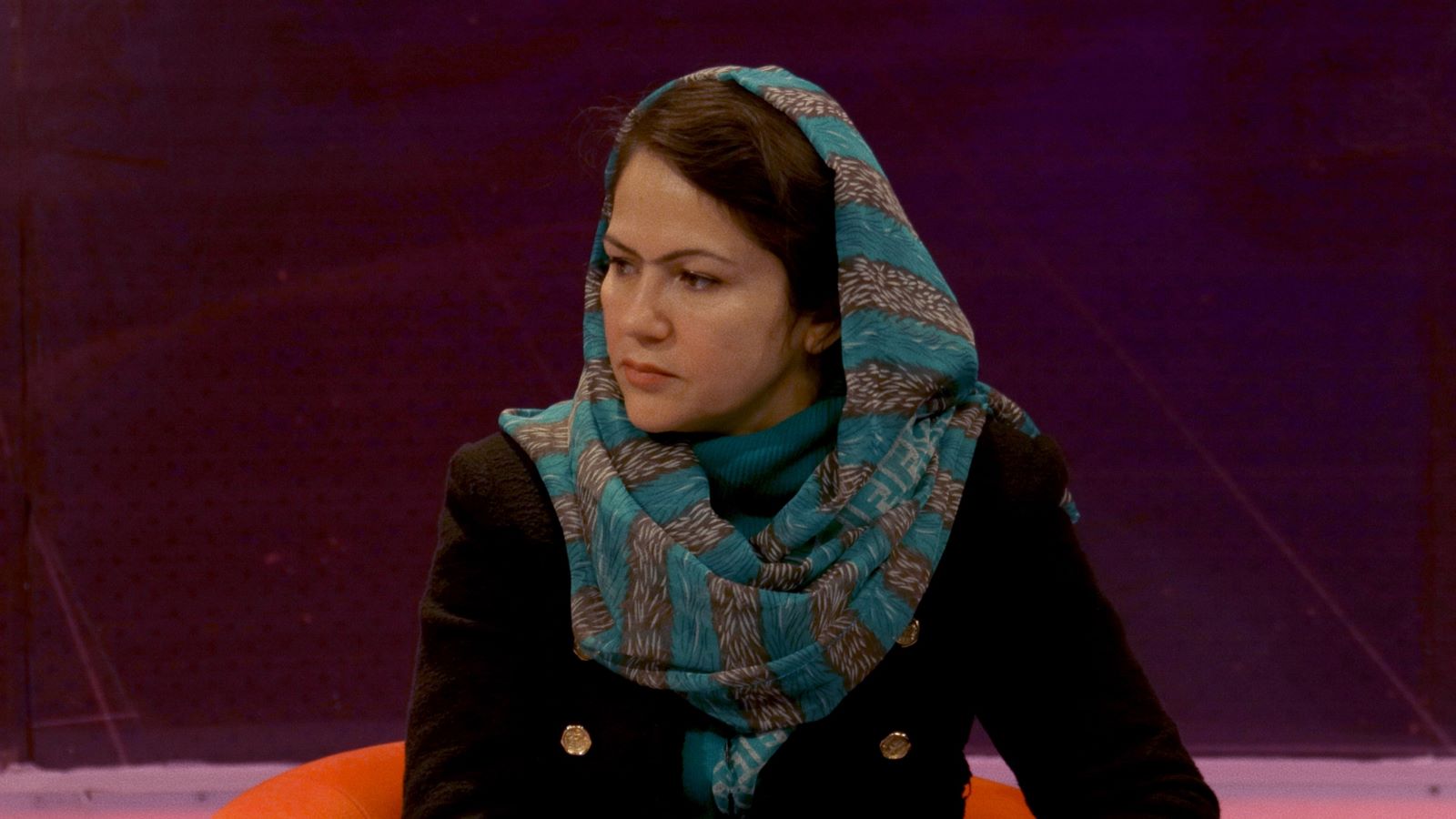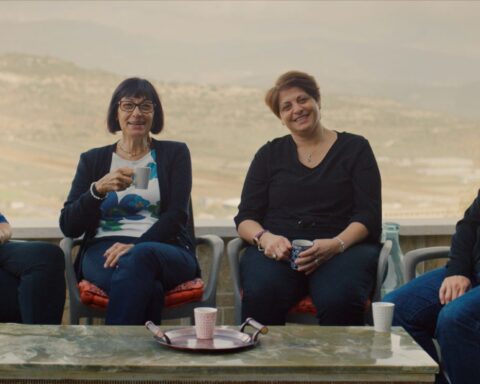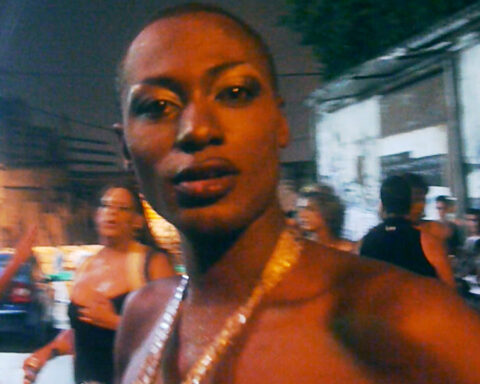“My dad said, ‘there’s a thing called a documentary, and if you’re feeling this way, why don’t you call the zoo?’” Daughters director Natalie Rae recalls, describing the impact her father had on her career. The Vancouver native, speaking with POV and Daughters co-director Angela Patton over Zoom, says her filmmaker father introduced her to documentary at six years old after she expressed concerns about endangered species. On his advice, she contacted the zoo, made some queries about their polar bear, and set things up to make her first documentary. “He explained at a really early age what this concept of documentary or social impact filming was, and he helped me do that,” notes Rae.
“He just had the spirit of this project and we’re very close. I know how much a father’s love has done for my life, having the confidence to pursue what I wanted to do, and love myself.”
Patton agrees that you can see her father’s hand in her path. “My dad is the best daddy in the freaking world,” Patton says proudly. “I am a daddy’s girl; have been all my life. My father is really instrumental in me hearing the girls.”
Dates with Dad
Daughters brings to the screen a mission that Patton developed with the Date with Dad Weekend. The program gives incarcerated men the chance to connect with their daughters through a dance. Established in 2008, the project draws upon Patton’s experience hearing from girls who couldn’t connect with their fathers through divorce, passing, and other circumstances including incarceration. The idea, as the film tells in its opening scene, was to bring the daughters to their fathers so that the single encounter of a dance would give them strength in the years ahead.
“My experiences with girls, specifically Black girls in my community that have a really challenging time connecting with their dads, is definitely a part of our mission at Girls for a Change. We know the impact that it has had on their daughter’s decisions,” says Patton. “I know that with my father being in my life, all my life, I’m very fortunate. My father’s 85 years old and he has been on this journey with me.”
Patton praises her daddy’s shoe-shining skills in Daughters when the dads prepare for the dance. She notes that her dad also made the trip to Sundance where Daughters won two prizes: the Audience Award for U.S. Documentary and the distinction as overall Festival Favourite. Rae, meanwhile, says the Hot Docs premiere marked a special night with her dad as the filmmakers’ journeys with their fathers came full circle. (Patton says her dad was back home watching her kids so that she could attend the festival.) Appropriately, Daughters dedicates its story to fathers.
Starting with Passion
Rae says Patton’s passion for fostering positive and loving relationships between fathers and her daughters inspired her to pursue a feature documentary after seeing her powerful TED Talk about the Date with Dad Weekend. Audio from that lecture appears in the opening sequence of Daughters. It situates the story within the project that Patton developed. Rae says she found Patton’s talk inspiring after doing work in gender equity.
“I was frustrated that a lot of the messaging was talking down to young girls, telling them to be empowered rather than saying, ‘You are perfect the way you are’ and putting the onus on society and men to do the work to create space and equality for young women,” notes Rae.
The director says a friend suggested that Patton’s talk would resonate. “I watched it and Angela was like, ‘The wisdom lives inside of them, the girls already know what they need to know to survive.’ She was saying the things that I’m feeling and the world needs stories like this. We need to create space for the ideas of young women to have these amazing things happen.” Shortly after, Rae says she contacted Patton with an idea about how the girls’ stories could be a story for healing.
Patton adds that while other filmmakers had approached her to tell the Date with Dad story in a film, Rae’s persistence and understanding of the project’s nuances indicated that she was an ideal fit. “She heard and saw the same vision,” Patton says,” and that was to make sure that we centered the girls at all times. That it would not be a jail story. She was the only filmmaker who saw the girls as the key to the healing.”

A Collaborative Work
One way that Daughters avoids pitfalls of other jail stories is by simply identifying the male characters as fathers. The film doesn’t define the men by the circumstances that brought them to incarceration. Instead, Rae and Patton characterize these men by their roles as fathers and by their desire to reform. It illustrates how Patton’s project greatly reduces recidivism rates among participants. Reconnecting fathers with young daughters reminds them that there are people waiting for them on the other side.
Patton says that she also connected with Rae’s pitch immediately because it reflected her model for progressive practices. She notes that on the day of our interview, she looked up Rae’s email pitch and saw the subject “Film Collaboration.” Daughters invites Patton to be an onscreen character and co-creator alike. The project is her baby and Rae respects that.
“She saw me as being significant and also partnering with her and not just telling my story or telling the girl’s story. She saw that we should co-create because it is a sensitive story,” notes Patton. “We both agreed that it’s a love story and we’ve done that together over these past years.” Above all, Patton says that Rae wanted to follow her philosophy: “Let the girls lead.”
While Daughters doesn’t overtly tag Patton as co-director, it does ultimately acknowledge her dual roles. (Something I admittedly didn’t catch upon first viewing.) Audio from her TED Talk opens the film, while a counselling session with the fathers introduces her as the mind behind the project before her first appearance. Daughters therefore adds to the growing body of collaborative documentary with films like All the Beauty and the Bloodshed and The Territory that avoid the conventional director-subject dynamic.
A Personal Approach
Rae adds that the personal stakes in the story informed the film from trusting Patton’s work setting up the dance when they had only one day to get the shots right. “The project always had people that were really close to the subject matter, so that’s been very important to me,” notes Rae. The director cites the lived experience of cinematographer Michael “Cambio” Fernandez, whose mother was incarcerated for eight years. “Cambio has the emotional intelligence to have been through that as a child. All the decisions around who’s in the space, who’s capturing it, who’s editing it, and how the film is being edited comes from a very personal place.”
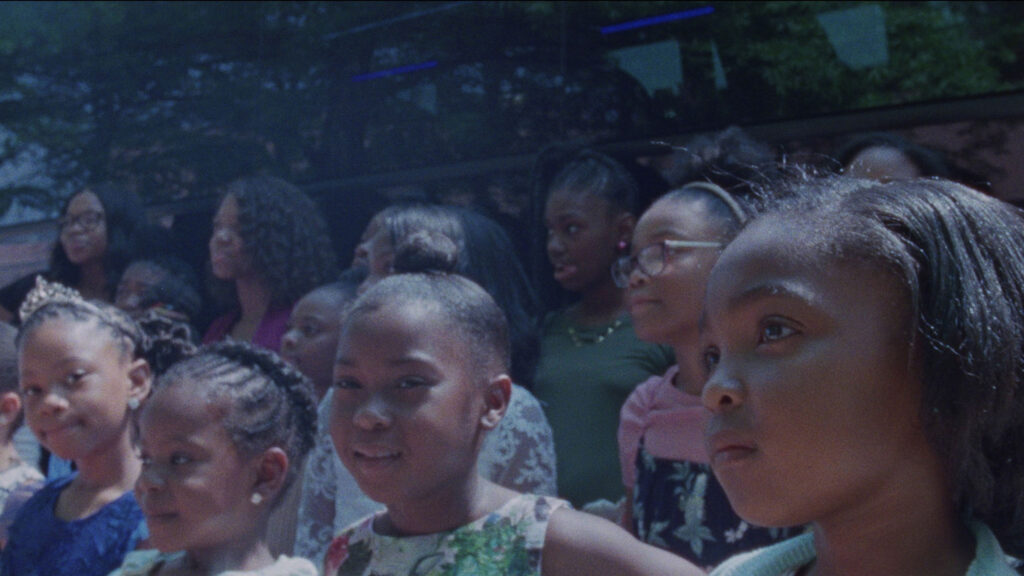
Rae says that they wore hats interchangeably throughout their eight years together on the project. Patton would, of course, take the lead with the dances and logistics of the program, while Rae led the vérité scenes with the families outside the prison and chased funding. Rae says that despite the emotional hook and the success of Patton’s project, funding didn’t come easily. She notes that distributors didn’t really bite until the film triumphed at Sundance, with Netflix ultimately winning the bid. (Notably, all of the three previous doc Oscar winners—Summer of Soul, Navalny, and 20 Days in Mariupol—won an audience award at Sundance.)
Casting the Story
Finding the right place and cast for the film, moreover, could be a story itself. Rae recalls that they originally planned to shoot in Patton’s hometown of Richmond, Virginia, where the Date with Dad program originated. Patton’s story about Richmond Sheriff Woody, who was immediately taken by the girls’ pitch to bring the dance to dad, appears in the film’s opening as an illustration of the program’s potential for impact. However, when Woody lost his bid for re-election in 2018, Rae says they were left without a filming location—until a query from Washington, D.C. expressed interest for bringing the program there.
“We both flew out there and explained the power of what this could do as a documentary and could we film everything, not just the dance, but those three months of the fatherhood circles, interviews, and moments in their cells,” explains Rae. “In a miracle, they said, ‘Yes. Let’s do it. Let’s do it June 1st.’ And then it was off to the races after a few years of not knowing which year it was going to be.”
Rae adds that they took care to ensure that, aesthetically, the scenes in the prisons reflected the humanist philosophy of the dance program. “We’re filming in a jail, so we were looking at how to humanise the fatherhood sessions as much as possible. We were really lucky to find a room with natural light for Cambio’s delicate touch with his framing and his sensitivity,” says Rae. “We weren’t even in those rooms. It was just Cambio with the men and they had a very sacred space there.”
The Daughters
With the dads locked in, the directors note that they then had to find the girls. Daughters focuses on four dance participants—Aubrey, Santana, Raziah, and Ja’Ana—of varying ages and circumstances. The directors explain that they gave all families who were participating in the dance program a chance to be in the film, but honed in on these girls as the process evolved.
“They kept showing up when Natalie was calling them or Lisa [Mazotta], our producer,” says Patton. “They would allow [Rae] to follow them and they were committed to it. We didn’t know until we got into the editing who were going to be the four families, but what helped us get there is they all had a different lived experience. They were all different ages, but they all lived in D.C. and all of their fathers were incarcerated for different reasons. We felt like if we wanted to show a girl’s story, it makes sense to show multiple daughters that are dealing with one similarity, but for different reasons and how they are evolving and growing and changing due to the impact of incarceration.”
Don’t expect a dry eye at home or in the theatre when the families reconnect in the gymnasium for the daddy-daughter prom. Daughters adds to the emotional tenor of the dance by shooting on film. “With the dance, you can’t light, you can’t set up cameras; you can’t set up shots. You want everything to be hands off,” says Rae. “Shooting on film and just the softness and quality and nostalgia and the humanity—that comes from that image.”
Shooting on Film
The warmth of the film stock allows the images of the roaming cameras to resonate, capturing on celluloid a pivotal moment for fathers and daughters alike. “Knowing that it’s going to be captured that one time and be there forever is also conceptually really beautiful,” says Rae. The risky endeavour means no second takes for an event long-in-the-making, but brings rewards. “That choice made the dance as powerful as it is. If that was shot on digital cameras or cell phones, it would feel much more like a regular gritty prison film. This made it feel like the elevated dream and emotional experience that it is.”
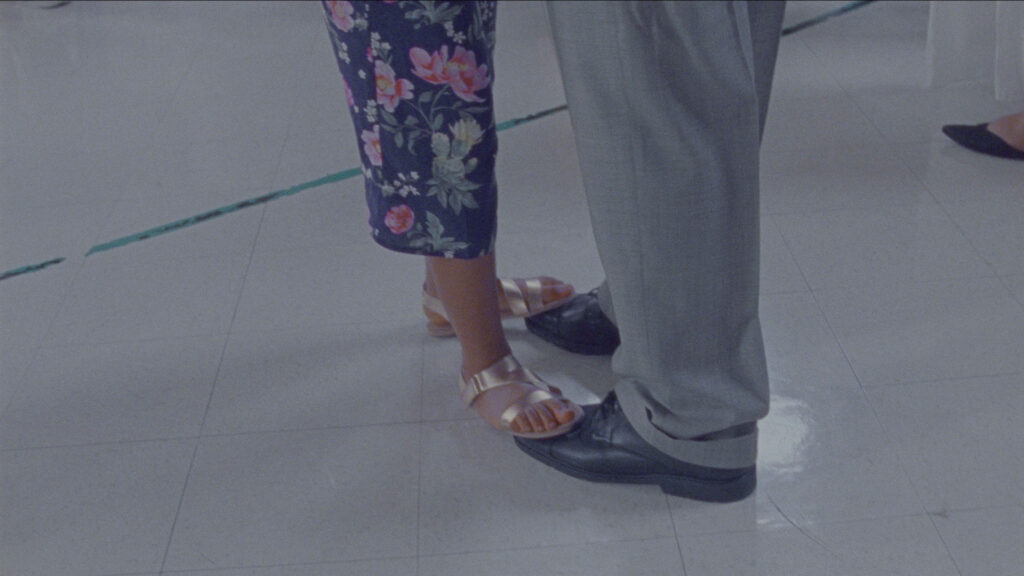
Moreover, the images caught in this emotional powerhouse are bittersweet. For many of the girls, meeting with dad for the first time in years brings mixed emotions. Anger simmers up alongside joy and happiness. But what the film captures is the recognition of lost touch and the importance of family visitation, especially physical touch, in the rehabilitation of incarcerated men. One reason that the dance proves as emotional as it does is that it’s the only chance for these families to embrace during the fathers’ sentence. A title card in Daughters notes that “touch visits,” meaning in-person physical visits, have been prohibited for a decade. Families connect over video calls, even when they make the drive to prison, which in some cases takes several hours.
The Power of Touch
The film observes as the girls connect with their fathers through pay-by-the-minute audio and video calls, which are all part of America’s dehumanizing prison system searching for profits.
“It is just so heartbreaking to see someone like Aubrey and her shift over those five years with the disconnect of a video visit or a phone calls does,” observes Rae.
“This did not happen because of COVID,” Patton stresses. “If they’re not connected to their families, that makes it really hard for them to come back and feel that they’re wanted. They feel so isolated from the community if their own family is not connected to them. I’m hoping people see that and say, ‘Let’s see what’s happening in my neck of the woods so I can make sure that returning citizens have a shot.’”
Patton adds that one element the film didn’t touch on is equally important: the absence of physical letters. “In Richmond, Virginia and in D.C., the persons that are incarcerated are not able to receive even a physical letter anymore,” she explains. “They actually scan the letter and put it on an iPad, and the same iPad that you would take your phone calls on or do your virtual calls on is the same iPad where you will read your letters. The purpose for that is because of the contraband, but of course we know that it’s probably because a tech company is making more money off of that because contraband is easy to open a letter, take it out.” Without letters, the prisons further dehumanize people in incarceration as a letter can provide a sense of touch, of smell, and of connection to back home.
Making an Impact
Rae adds that shooting in the prisons illustrated the impact of visitation. “As soon as I sat and talked to each father, it transformed all the things in my head and the fear about the hard conversations that we were going to have,” she notes. “They really enjoyed having the fatherhood circles and having us come in and talk. That was an opportunity to really connect on a human level.”
The film’s impact campaign seeks to educate viewers about how they can help facilitate this contact and mobilize support for change to improve the lives of Black girls and their families. This includes voting smartly and strategically or calling for prison reform. Rae notes that audiences should find strength in the girls and follow their lead as she did. “I don’t have my own kids, so being so close with Aubrey, Santana, Ja’Ana, and Raziah, they always surprised me with their strength and growing and being so smart and inquisitive,” says Rae. “At times when I wasn’t sure I could keep going, Aubrey’s like, ‘Let’s go to the park and have an ice cream. It’s fine.’ They kept me going and if they’re keeping on going, I saw I couldn’t back down. These girls are strong.”
“The goal is to make sure that the girls connected so that the story can be different for the next girl who’s in a very similar position as them,” adds Patton. “I see them as the heroes. We remind them that you are the ambassadors of this film, and I’m really excited about how they are embracing that and starting to see themselves as the ambassadors and not victims. Having them go on this long road and this journey of change with us, I know more rewards will come from that.”




